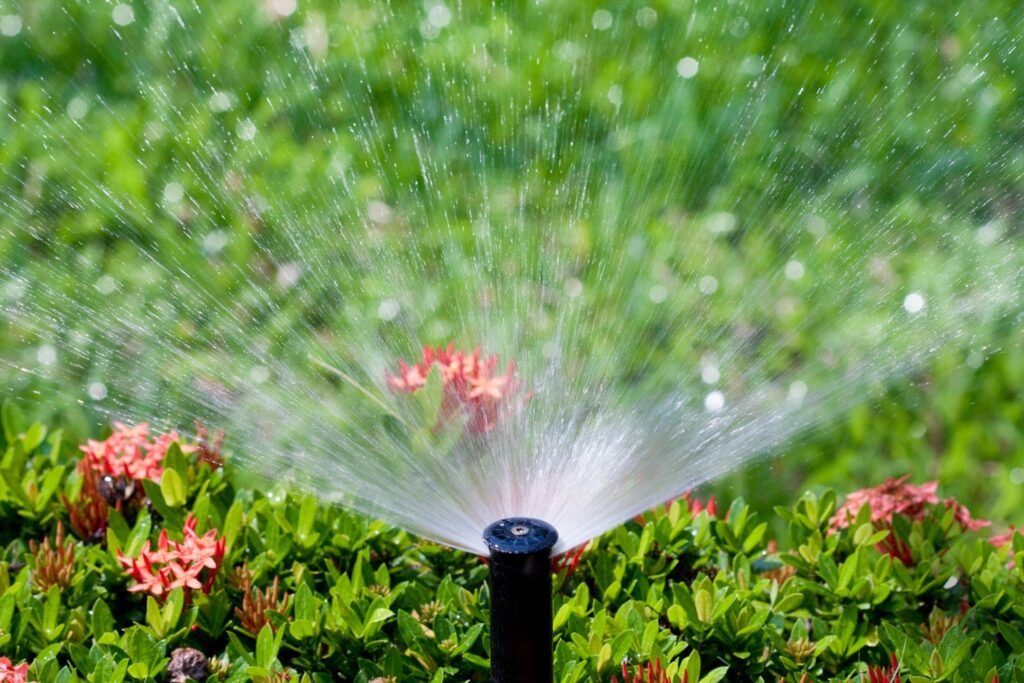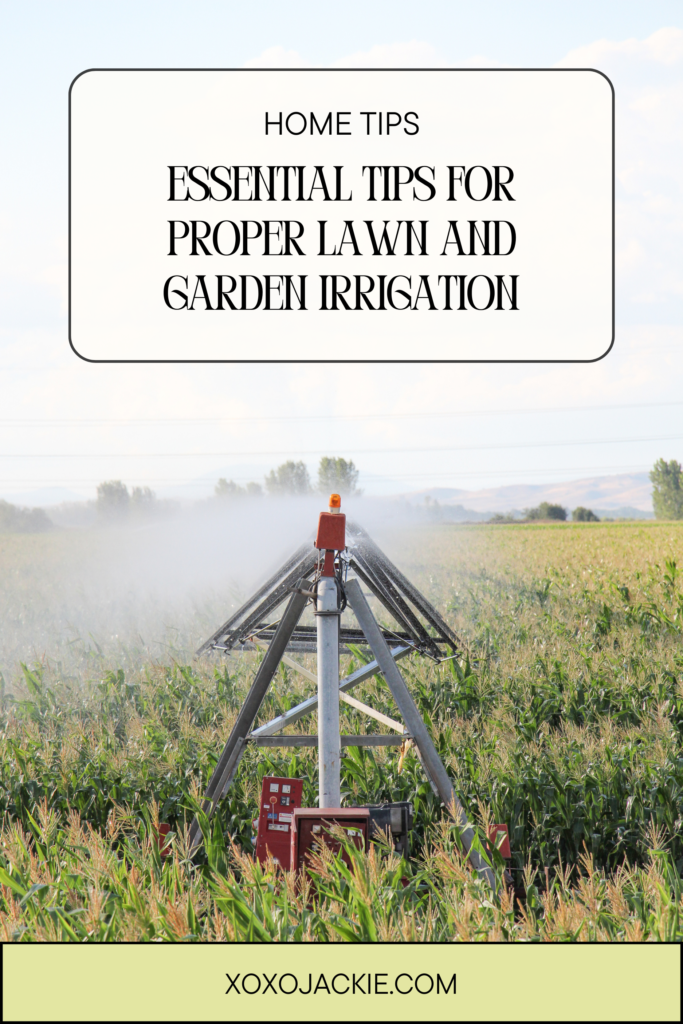A beautiful lawn and thriving garden can be a source of joy, but they also require some effort to maintain properly. Getting the irrigation just right is a key part of that process, as too much or too little water can harm your plants and lead to an unappealing yard. With the summer heat in full swing, reliable irrigation is crucial to keep your outdoor space green and vibrant.
In this guide, we will share some of the most important tips I’ve learned over my years of gardening experience to help you set up an irrigation system that provides the water your lawn and plants need while preventing wasteful overwatering. From choosing the right sprinklers and hoses to setting an appropriate schedule, follow these essential irrigation guidelines to care for your yard efficiently and help it stay healthy all season long.
Lawn and Garden Irrigation 101
Irrigation is more than just watering your lawn; it’s about providing your plants with the necessary hydration to thrive without wasting water. The right system will deliver the right amount of moisture at the right times, ensuring your garden’s health and sustainability. Below, find essential lawn care tips and techniques to optimize your irrigation practices.
Understand Your Garden’s Needs
Every plant has unique water requirements, varying significantly based on species, soil type, and climate. Begin by researching the specific needs of your garden’s plants and tailor your irrigation strategy accordingly to avoid under or over-watering.
Choose the Right Irrigation System
From drip irrigation for efficient watering at the roots to sprinkler systems for broad coverage, selecting the right system is crucial. Consider the size of your garden, the types of plants you have, and your local climate when making this decision.

Implement a Watering Schedule
Consistency is vital in garden irrigation. Establish a watering schedule that best mimics the natural rainfall patterns of your climate. Early morning or late evening watering can reduce evaporation and ensure that plants have sufficient moisture throughout the day.
Monitor and Adjust Regularly
Irregular weather patterns can quickly render your watering schedule insufficient or excessive. Regularly check your garden’s moisture level using a soil moisture sensor or a simple finger test, and adjust your irrigation practices as necessary to meet your garden’s changing needs.
Invest in Mulching
Applying a layer of mulch around your plants can significantly reduce water evaporation from the soil, keeping it moist for longer. This not only conserves water but also promotes healthier plant roots by maintaining an even soil temperature.
Utilize Rainwater Harvesting
Consider setting up a rainwater harvesting system to collect and store rainwater for your garden. This eco-friendly approach not only reduces your water bill but also provides your plants with chemical-free water that’s ideal for irrigation. Rainwater is particularly beneficial as it is soft water, lacking in minerals that can harm plant roots over time.
Be Mindful of Watering Depths
Deep watering encourages the roots of your plants to grow deeper, making them more drought-resistant and healthy. Instead of shallow watering every day, opt for thorough watering a few times a week to ensure water reaches deeper into the soil. This technique is especially beneficial for encouraging strong root systems in young trees and shrubs.
Automate Your Irrigation with Timers
Investing in a timer for your irrigation system can save water and make garden care more convenient. Set your timers to water early in the morning or late in the evening to minimize evaporation. Automation ensures your garden receives exactly the amount of water it needs, even when you’re away or forget to water.
Benefits of Irrigation for Your Lawn and Garden
Proper irrigation is an essential aspect of maintaining a lush, vibrant lawn and a flourishing garden. It’s not just about keeping the ground wet; it’s about understanding the unique needs of your outdoor space and catering to them in the most efficient way possible. The right irrigation strategy can make all the difference in the health and appearance of your plants, conserving water while ensuring your greenery is robust and thriving.
Below, we highlight some of the key benefits that a well-planned irrigation system can bring to your lawn and garden, demonstrating how a little effort in setup and scheduling can yield significant returns in terms of plant health and water savings.
Enhanced Plant Health and Growth
A consistent and suitable irrigation plan directly contributes to the health and growth of your plants. By delivering water directly where it’s most needed, you can prevent common problems such as leaf burn or disease that often arise from improper watering techniques. Healthy plants are more resilient to pests and diseases, reducing the need for chemical interventions.
Water Conservation
A well-designed irrigation system helps in conserving water — a precious and often scarce resource. By applying water only where and when it is needed, you can significantly reduce runoff and minimize evaporation. This not only helps the environment but can also result in lower water bills.
Time Savings
Irrigation systems, especially those that are automated, can save a considerable amount of time. No longer will you need to spend hours each week manually watering your garden. With timers and programmable systems, you can ensure that your plants receive the right amount of water, even when you’re not at home.
Increased Property Value
A beautiful, well-kept garden and lawn can significantly boost the curb appeal and overall value of your property. Investing in an efficient irrigation system is a step towards achieving a green, blossoming outdoor area that can attract the admiration of neighbors and potential buyers alike.
Final Thoughts
A well-designed and properly implemented irrigation system can be a game-changer for your lawn and garden. By understanding your plants’ needs, choosing the right equipment, and being mindful of water usage, you can promote healthy growth while conserving this precious resource. With regular monitoring and adjustments, along with the use of eco-friendly techniques like rainwater harvesting and mulching, you can achieve a beautiful, thriving outdoor space that’s both sustainable and enjoyable.





